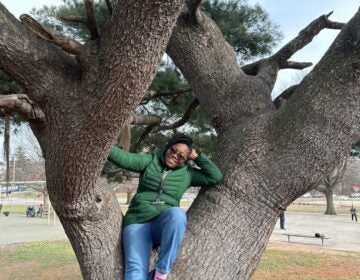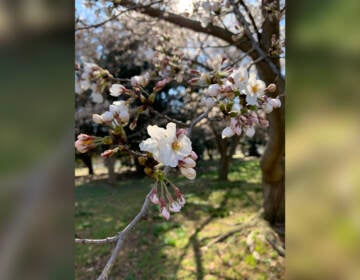From mucking stalls to riding tall, Philly kids Work to Ride
"Other than the fact that you’re working with 5,000- to 7,000-pound animals, there’s not really a whole lot of trouble to get into here."
Listen 5:07If your dream as a kid was cleaning out stables and learning how to gallop on thoroughbred horses, you might have pictured yourself in the countryside.
But that’s all part of Work to Ride at Chamounix Equestrian Center in a stable just across the Strawberry Mansion bridge in Philadelphia’s Fairmount Park.
Lezli Hiner, who started the program in 1994, has filled the former home of the city’s mounted police with 36 donated horses — many of them injured on the racetrack. And there aren’t many other adults around; kids run every part of the stables.
On a recent day, Hiner moved through the building like the captain of a ship, directing a 9-year-old hand how to properly wash out a bucket.
“You remember how to do it?” she said. “Scrub first, then wash and rinse.”
As she watched teens lead a cantering lesson for kids in Chamounix’s summer camp Hiner described the program as animal husbandry training combined with outdoor therapy.
“They know they are responsible for these kids. You know, they could fall off in a hot second or get stepped on,” she said.
Just then, one girl’s horse broke into an unexpected trot.
“Oop oop oop!” said Hiner. “She’s going down.”
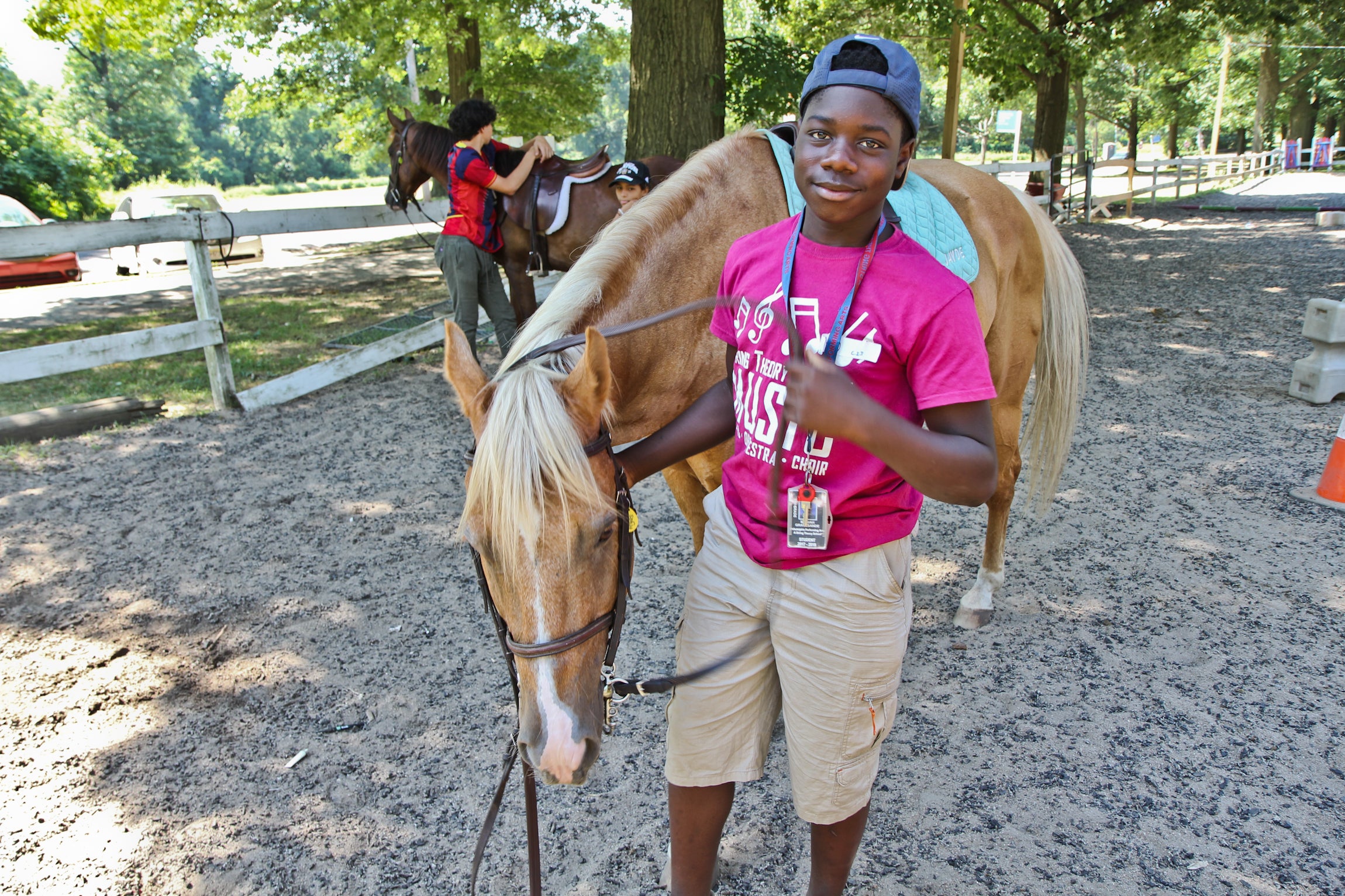
Thirteen-year-old Mosiah Gravesande explained the young rider probably fell because she was nervous.
“We try to get them over their fear. First, we start them off on easier horses, that way they know the horse is fine, and then we try to build them up,” said Mosiah.
But the South Philly native said he never needed convincing when he first began riding horses.
“I was just happy to get on one, that’s all,” he said.
He also appreciates being in the wooded setting, and how the five dogs who live at the stable all wander around without leashes. “I mean, in my neighborhood, it’s loud,” he said. “There’s barely any grass. Here it’s, like, nature-y.”
Like the 30 or so other kids in the Work to Ride program, Mosiah had to prove himself by volunteering in the stables every day after school for three years.
Once admitted to the program, they get a stipend — and some seasoned 11-year-olds make $100 a week. And when they turn 16, they’ll begin earning $8.50 an hour with 50-cent raises every six months.
Hiner funds the program through a mix of grants and tuition from summer camps and riding lessons.
First encounters
Taking a break from learning how to canter, summer camper Piper Skoglund, 10, was sitting under a tree. She has not fallen off a horse, but that’s because she’d only been riding for a week.
Although riding lessons were her idea, the Wynnewood resident said she felt intimidated when she came face-to-face with a horse.
“They were tall, they were bumpy, I was kind of scared,” she said. “If you speak to them and tell them, ‘Go left,’ they aren’t going to go left. You have to physically do that.”
Camp counselor Julian Penados, 17, says his job is the coolest among his group of friends.
“I know friends that are working, but they are doing stuff like baby-sitting, McDonalds, Target, you know? They’re definitely not doing anything that I do here,” he said.
But his closest friends are in Work to Ride.
“We all hang out, ride, and get yelled at together,” said the Chestnut Hill teen who hopes to keep working with horses — and perhaps join a polo team.
Work to Ride alum Daymar Rosser just graduated from Roger Williams University, where he was a member of the school’s national championship-winning polo team. Rosser is pursuing a career in sports public relations, but you can still find him at Chamounix, making a poultice for a horse with a strained tendon.
He said it’s all thanks to his brother wandering around their Parkside neighborhood.
“The oldest out of my family, David, he was just walking through the park. He came across the horse stable and started talking to [Hiner], and she just took him in,” said Rosser.
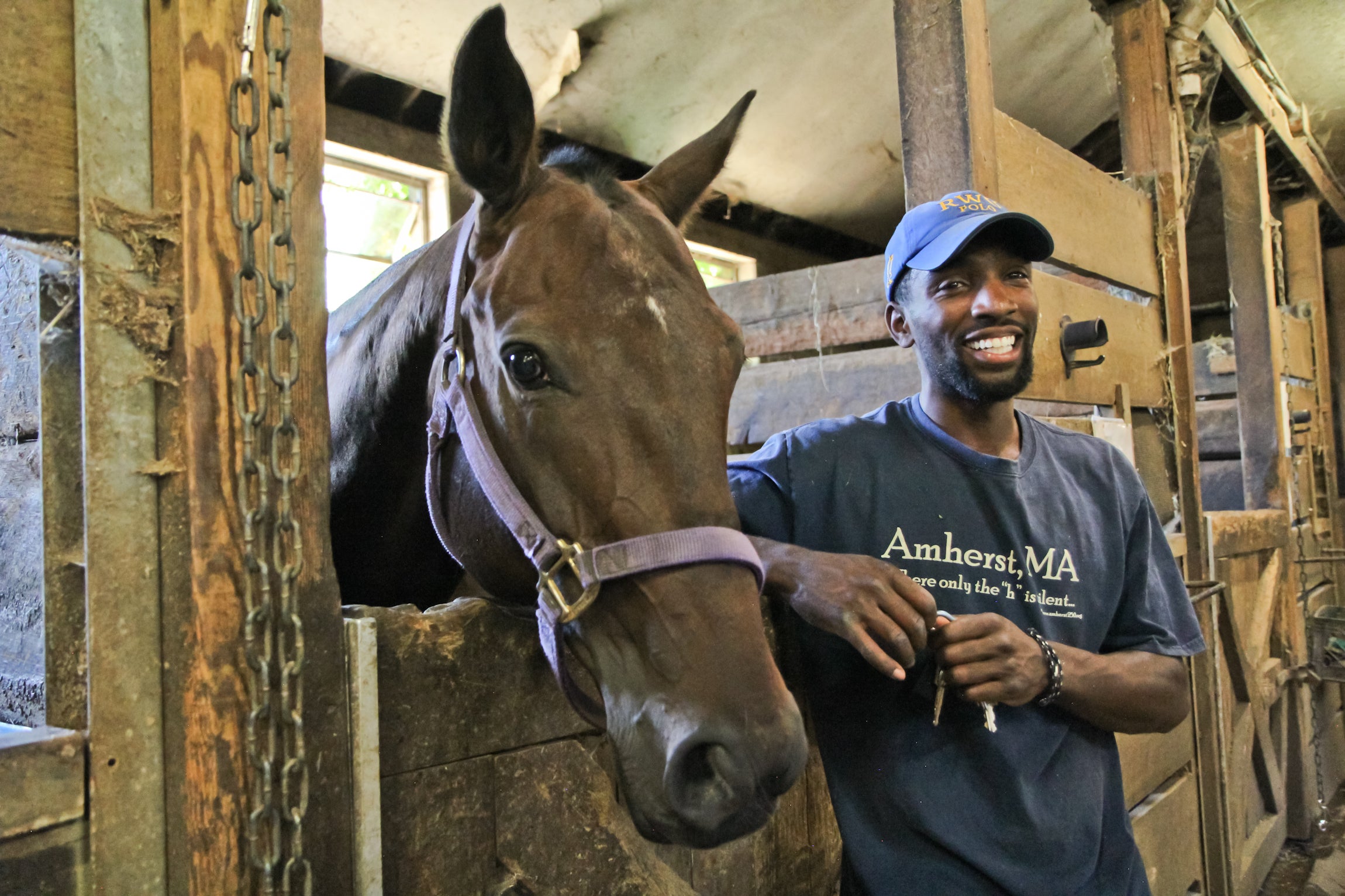
Rosser started in the stables when he was 5. As he got older, he and his brothers joined the first African-American polo team in the U.S., organized at Chamounix.
“Coming to this program, I have a really different lifestyle than other kids living in the city. I would spend my whole day here ’til like 9 o’clock, so I was never really home that much,” said Rosser.
In fact, he said, the stables are his second home.
“There’s a lot of support that goes on. Obviously, growing up in such a hard neighborhood as well as getting through high school and college — it’s tough,” he said. “It’s really stressful on you because you’ve been through a lot. But being here, it’s just really relaxing.”
It’s also a lot of work. In winter, kids will spend hours mucking out stables because the horses can’t go outside. Hiner is working on raising money to build an indoor ring and improve the barn, but she isn’t the kind of boss to sugarcoat anything.
“A lot of times, I’ll have parents apply to the program because the parents want the kids to do it. And then the kids get one whiff of, ‘No, you can’t go to a birthday party on Saturday because you’re supposed to be at the barn.’
“So they learn that this comes first because we invest a lot of money and time into these kids, and we want to impress upon them that life doesn’t always go the way you want it to go,” she said. “And you have responsibilities, and you have to be faithful to those.”
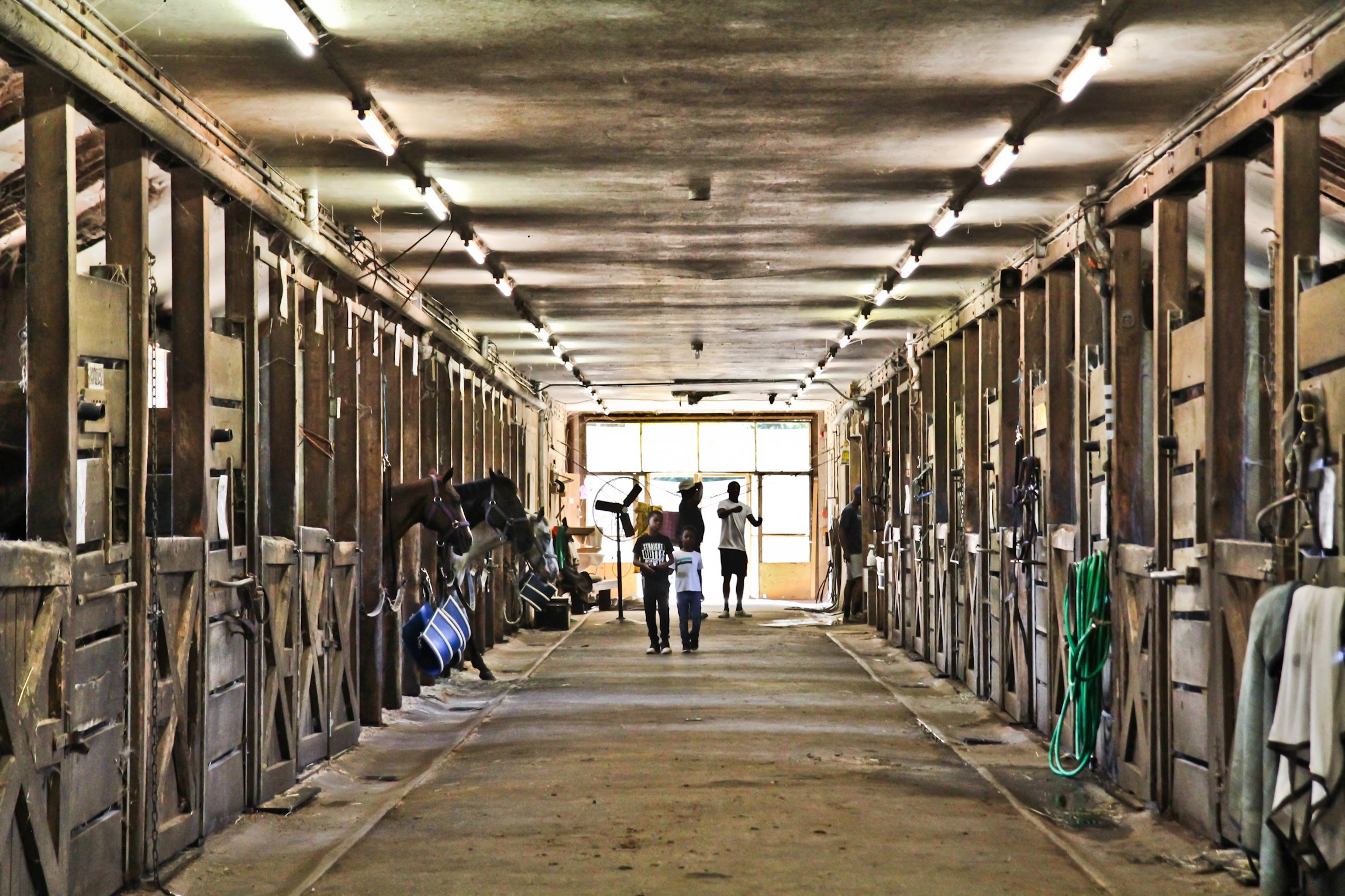
After the years of hard work, it doesn’t surprise Hiner that the kids in her program find success when they leave that barn.
“Kids really get to be kids here,” she said. “And there’s nobody standing over the top of them saying, ‘Oh Johnny, watch out don’t do this! Don’t do that!’
“Other than the fact that you’re working with 5,000- to 7,000-pound animals, there’s not really a whole lot of trouble to get into here.”
WHYY is your source for fact-based, in-depth journalism and information. As a nonprofit organization, we rely on financial support from readers like you. Please give today.


